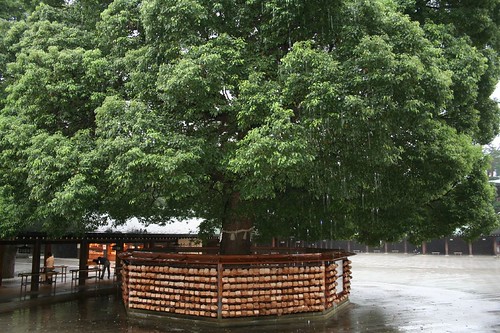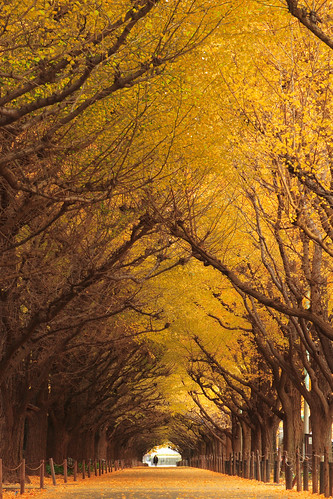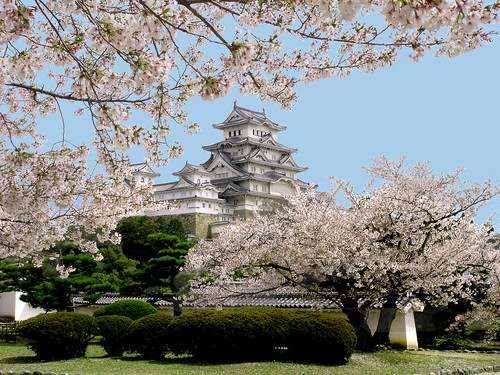This is a sacred Camphor tree located at the Meiji shrine in Japan. In Japan sacred trees have thick ropes around their trunks. This sacred tree has a special wishing wall surrounding its trunk. The idea is to write a prayer or wish on a small wooden tablet and hang it on one of the pegs on this wall. The Shinto priests then pray for all of the wishes on the tablets.
Meiji Shrine wishing tree in Japan
This is a sacred Camphor tree located at the Meiji shrine in Japan. In Japan sacred trees have thick ropes around their trunks. This sacred tree has a special wishing wall surrounding its trunk. The idea is to write a prayer or wish on a small wooden tablet and hang it on one of the pegs on this wall. The Shinto priests then pray for all of the wishes on the tablets.
Jomon Sugi tree - Largest Cedar in Japan
This large “Yakusugi Cedar” (Cryptomeria japonica) tree was located in 1996 and has since become quite famous. It is said to be the largest Cedar tree in Japan. It is 25 meters tall and estimated to be around 2,200 years old (some claim that it is much older). It is called “Jomon-sugi” (meaning Old Cedar) and is located in the Yakushima World Heritage Area.

Roots II, originally uploaded by antonioperezrio.es.
“In its vicinity, there remains a stump of which age is said to be oldest
by the islanders. They say the tree was cut in 1586 to be used for
construction of a big temple in Kyoto. The age of the tree when cut down
is estimated to be 3000 years.” from www.nyu.edu
Ginkgo Avenue - Tokyo Japan
In Tokyo, near Aoyama there is a street that is lined with large Ginkgo trees. Both sides of the sidewalk on both sides of the street are lined with these magestic trees making for a total of four rows of trees. When the trees are in their full autumn colors it makes for a very dramatic and enchanting scene.
Labels: Asia, Ginkgo, Japan, picturesque
Tree that General Grant planted in Tokyo
Sign at the base of this tree reads...
KANJI KANJI KANJI
"General Grant the eighteenth president of the United States planted this Himalayan cedar when he visited Zojoji temple as a national guest in 1879."
tree species - Cedrus deodora
Labels: cedar, historical, Japan
Japanese Sakura at Himeji Castle
For more than 1200 years there has been a tradition of "flower viewing" in Japan, often referred to as "Sakura" which means "Cherry Blossoms". Every year a great deal of attention is given to the prediction and tracking of the Cherry blossom "front" as the blossoming period moves steadily from south to north. As I recall there was quite a row this last year as several of the Meteorological Agencies were a few days off in their predictions. It seems that a lot of people plan their visits to Japan in order to be able to witness and celebrate the Sakura.









